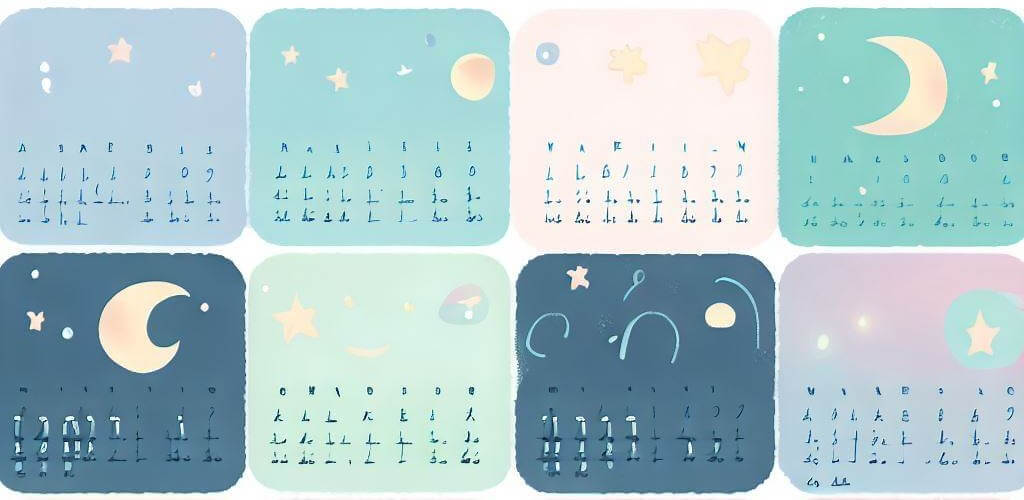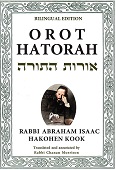
The first mitzvah given to the Jewish people was to establish their own calendar. The Jewish calendar, based on the lunar cycle, starts with the month of Nisan in the spring, when the Israelites left Egypt.
“This month will be for you the head month, the first of the months of the year.” (Exodus 12:2)
There is, however, another start of the Jewish year — Rosh Hashanah, on the first of Tishrei in the fall.
So when is the true New Year, Tishrei or Nisan?
Also: why is the Jewish calendar based on the cycles of the moon, while the non-Jewish Gregorian calendar is based on the 365-day cycle of the sun?
Two Paths
There are two paths of spiritual growth available to humanity. The first path utilizes mankind’s natural integrity, as it says, “God made man straight” (Ecc. 7:29). This path does not require extraordinary effort — as long as the soul has not been sullied with corrupt acts. To maintain this basic decency, it is sufficient to comply with the seven laws of the Noahide Code. This code prohibit actions which only those who have debased their innate goodness would desire — such as murder, theft, and idolatry.
The second path is special to the Jewish people. It requires constant, daily effort, by studying Torah and fulfilling its 613 mitzvot. This path involves the transformation of our human nature to a holy, angelic one; it cannot be attained without significant time and effort.
The Jewish people merited this path when they accepted the Torah. At Mount Sinai, they were adorned with crowns — a metaphor for this higher path of spiritual perfection.
Two Forms of Providence
Corresponding to these two paths of spiritual growth, there are two ways in which God governs the universe. The first form of Divine rule is according to the attribute of Judgment, which measures the merits of each individual. This form of providence corresponds to the natural integrity of all human beings.
The second form of Divine order is a supernatural rule. Due to the extraordinary effort of the Jewish people to perfect themselves, they merit miraculous Divine providence. Thus we find that Moses pleaded at Sinai that they should merit special Divine protection: “May I and Your people be distinguished from every nation on the face of the earth” (Ex. 33:16).
This Divine rule takes into account how each individual connects and contributes to the universe as an organic whole. Why is this a supernatural governance of the world? Its goal is to reveal the underlying unity of all creation. Since everything is working towards the same goal, even opposites blend and complement each other, acting in “unnatural,” miraculous ways. Fire and water, land and sea, are equals; each is willing to perform the work of the other in order to attain the common goal.
Tishrei and Nisan, Justice and Mercy
Now we can understand why there are two New Years in the Jewish calendar.
Tishrei and Nisan correspond to these two forms of Divine rule. The rabbis explained that God decided to create the world in Tishrei, but the actual creation took place in Nisan (Tosafot on Rosh Hashanah 27a). We find a similar statement in the Midrash, distinguishing between God’s initial plan for the world and its actual creation:
“God desired to create the world with the attribute of Justice. But He saw the world could not exist solely on that basis, so He blended the attribute of Mercy with that of Justice.” (Pesikta Rabbati 40)
The initial creation of Tishrei is rooted in the attribute of Justice. Each individual is judged on the basis of how he fulfills his purpose in life. The creation of Tishrei relates to the natural Divine order and the natural level of spiritual completion that is the lot of all of humanity.
The actual creation in Nisan, on the other hand, reflects the attribute of Mercy. This aspect of creation goes beyond the personal judgment of Tishrei, transcending the rule of natural law.
Nisan is the month of the miraculous Exodus from Egypt. It is the time of supernatural providence, when individuals are measured according to their connection to the overall purpose of creation. During Nisan, the Jewish people left Egypt and prepared to unite as a nation with a common goal of serving God.
Why does the month of Nisan reflect the attribute of Mercy? Even with some minor merit we become worthy, since we are connected to the underlying unity of the universe. This connection is through Torah and mitzvot, as we transform our individual nature to align with the overall pattern of Divine Will. Thus, “All of Israel have a share in the World to Come” (Sanhedrin 10:1).
The Sun and the Moon
So why is the Jewish calendar based on the moon?
The sun has its own light, which it projects effortlessly. This corresponds to the natural integrity of all peoples. The moon, on the other hand, is constantly changing, waning and waxing in its attempts to reflect the light of the sun. This corresponds to the constant efforts of the Jewish people to attain their unique level of perfection through Torah and mitzvot.
In the future, however, this will change. The sun and the moon will shine equally, and all of the months will be illuminated with the light of supernatural Divine rule.
(Adapted from Midbar Shur, pp. 11-18)





